Imagine stepping into a space where tranquility meets elegance; that’s the essence of Japanese home decor. It transcends mere aesthetics, evoking a vibe that speaks to the soul. Effortless simplicity, interlaced with natural materials, weaves a narrative of serenity in the bustling tapestry of life.
This article invites you on a cultural odyssey through the realm of minimalist designs, Zen interiors, and the subtle beauty of Wabi-sabi.
Your curiosity piqued, your senses ready to absorb an ancient wisdom translated into contemporary living spaces.
By journey’s end, you’ll grasp not just the visual allure but the spirit-stirring ethos of Japanese decor.
Amidst tailored insights on tatami mats and shoji screens, to embracing the philosophy of Kanso and Muji-style decoration, every notion unravels a layer further into this exquisite art form.
Dive into this deep pool of cultural aesthetics; emerge with inspiration to transform any abode into a sanctum of peace. Let’s embark.
Japanese Home Decor
Japanese Minimalism
 Image source: Konni Tanaka Design Group
Image source: Konni Tanaka Design Group
Oh man, you gotta embrace that Japanese minimalist approach. It’s all about decluttering and focusing on the essentials, ya know? So, think simple color palettes, clean lines, and only having a few pieces of furniture. This way, you’re creating a serene, Zen-like atmosphere. Remember, less is more here.
Serene Zen Gardens
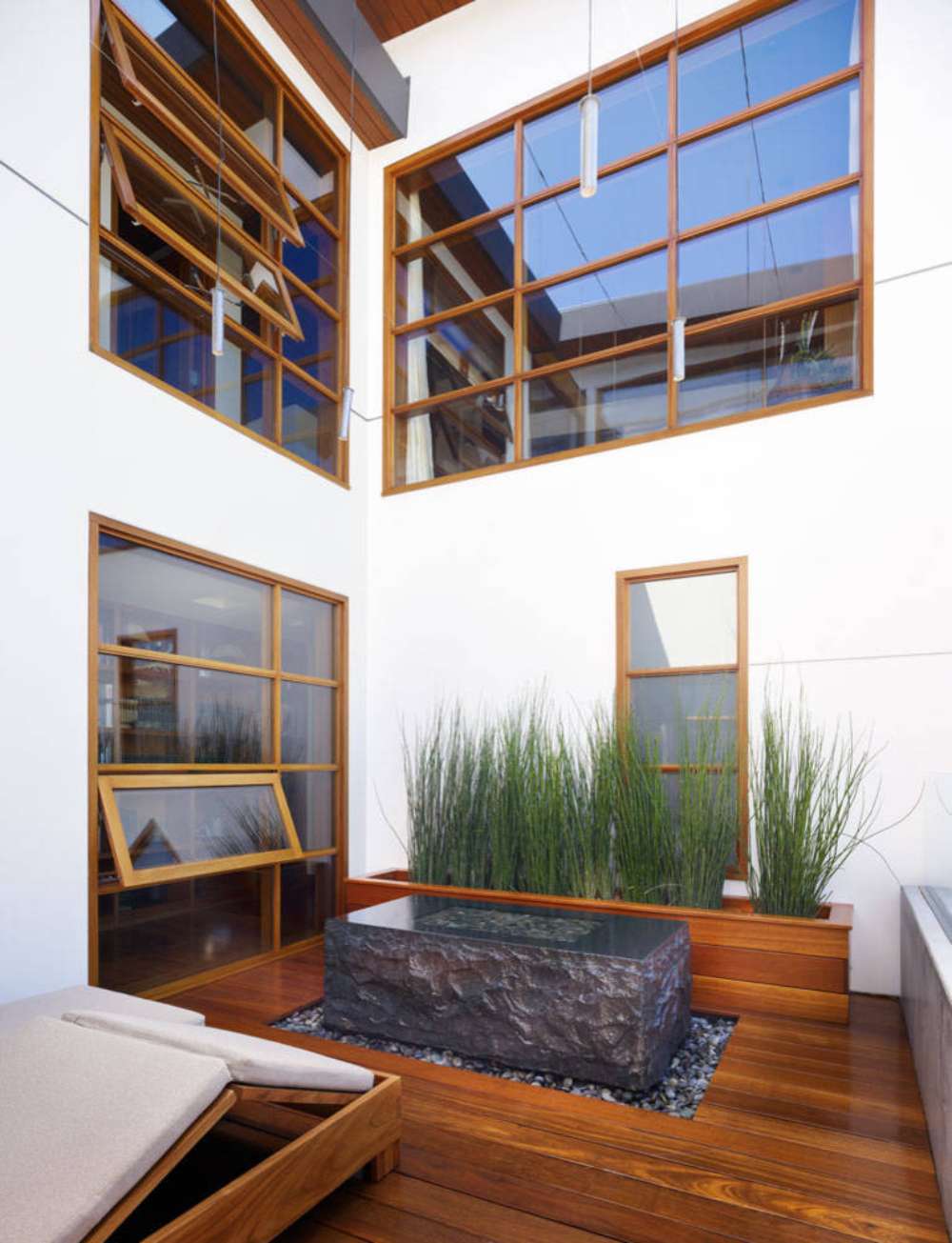 Image source: Rockefeller Kempel Architects
Image source: Rockefeller Kempel Architects
Creating your own Zen garden is a must. A tiny, peaceful oasis where you can meditate and contemplate life. Use sand, rocks, and maybe a few small plants to create a sense of harmony. Rake the sand in patterns to help clear your mind. It’s truly a masterpiece of tranquility.
Shoji Screens
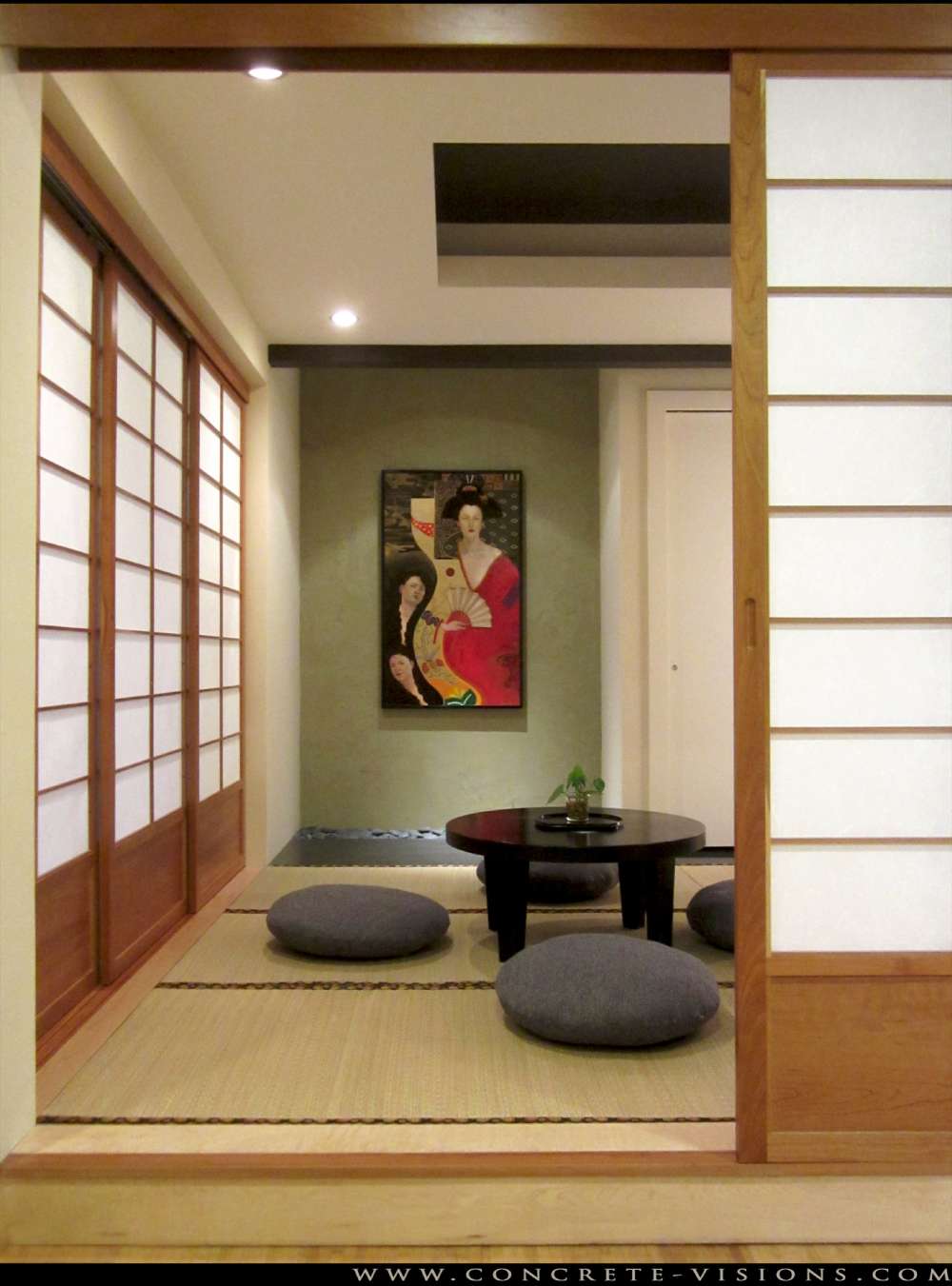 Image source: Concrete-Visions LLC
Image source: Concrete-Visions LLC
These screens are awesome for dividing spaces. Made of wood and translucent paper, they give a delicate touch to your home. Use ’em to separate rooms, create privacy, or just as a stunning decoration. Plus, they let light pass through, keeping things bright and airy. Love it!
Tatami Mats
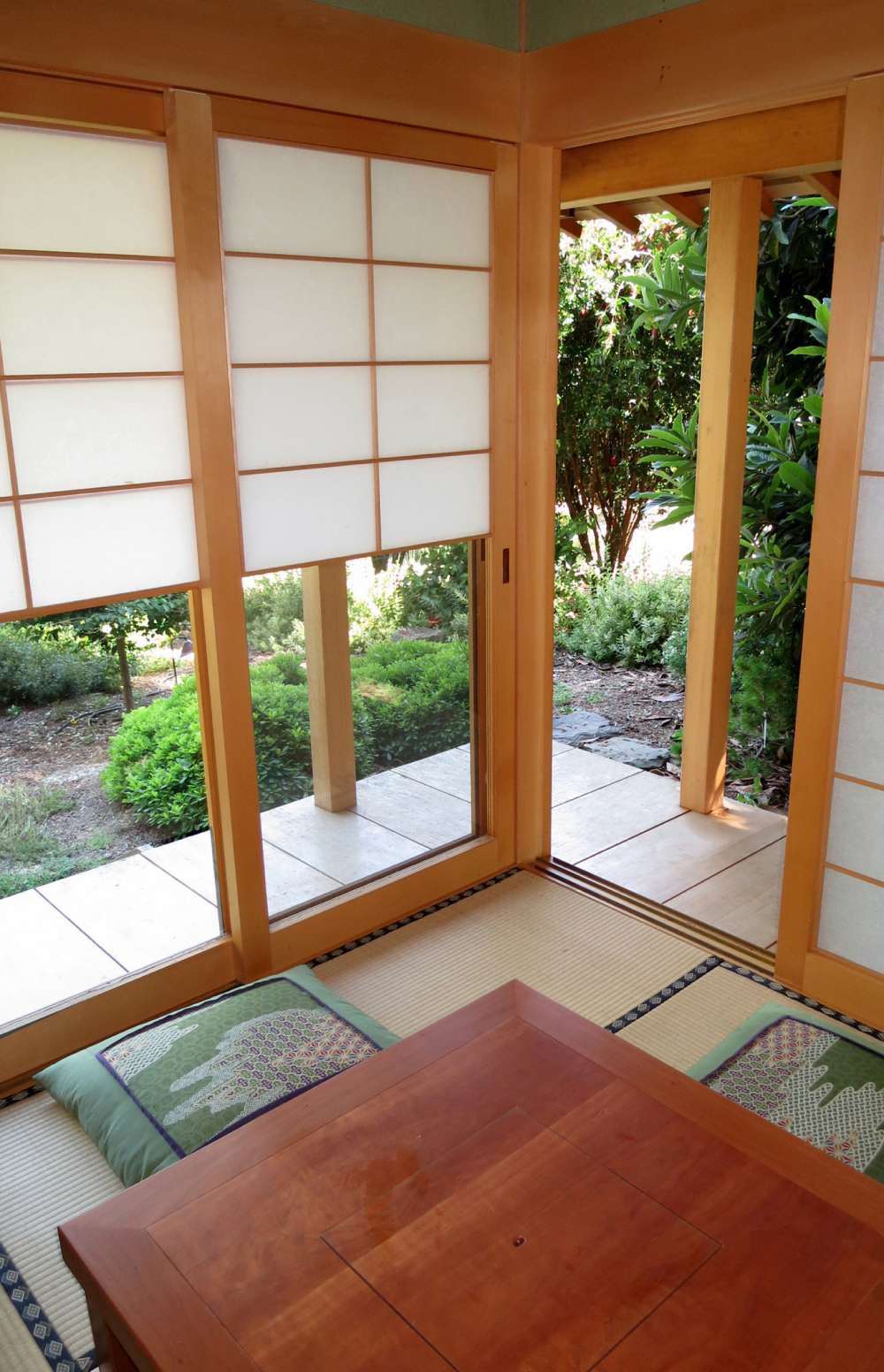 Image source: Ki Arts
Image source: Ki Arts
Tatami mats are iconic in Japanese homes. They’re woven from straw and usually measure about 3 by 6 feet. Lay them down wall-to-wall or just in specific areas. They’re perfect for sitting, sleeping, or even practicing martial arts (if you’re into that kind of thing).
Ikebana
 Image source: Charlie & Co. Design, Ltd
Image source: Charlie & Co. Design, Ltd
Want to add some life to your space? Ikebana is the Japanese art of flower arranging, and it’s simply breathtaking. Use a variety of flowers and plants to create an asymmetrical, balanced composition. It’s not just about the flowers, though – it’s also a spiritual practice that encourages mindfulness.
Bamboo Accents
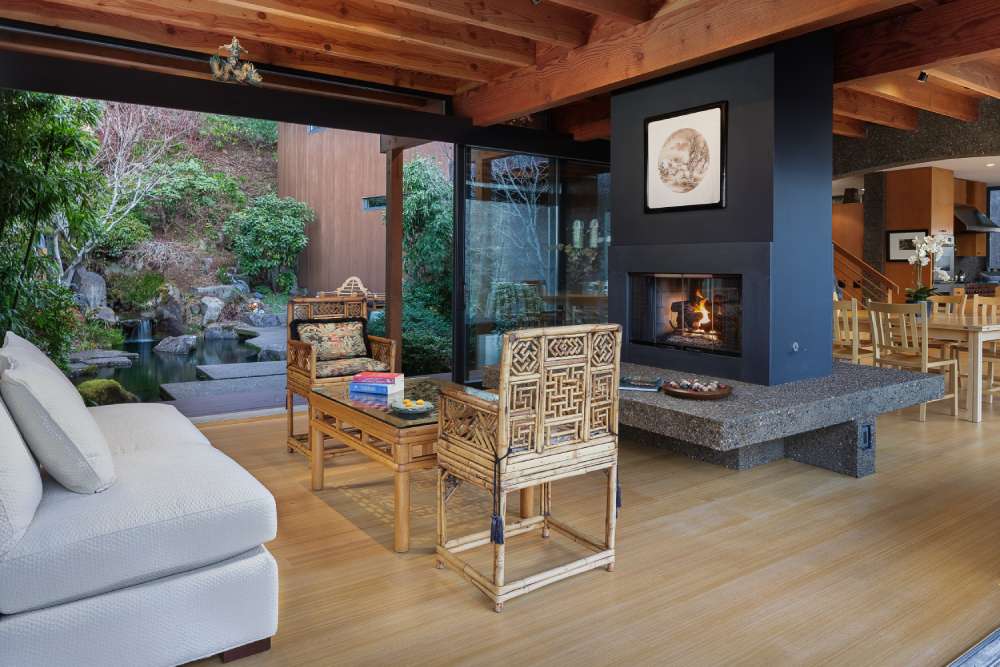 Image source: David Hertz & Studio of Environmental Architecture
Image source: David Hertz & Studio of Environmental Architecture
Bamboo is eco-friendly and super versatile. Use it to create furniture, accessories, or even wall coverings. It gives a warm, natural touch to your space while staying true to that Japanese aesthetic. Trust me, it’s a game-changer.
Noren Curtains
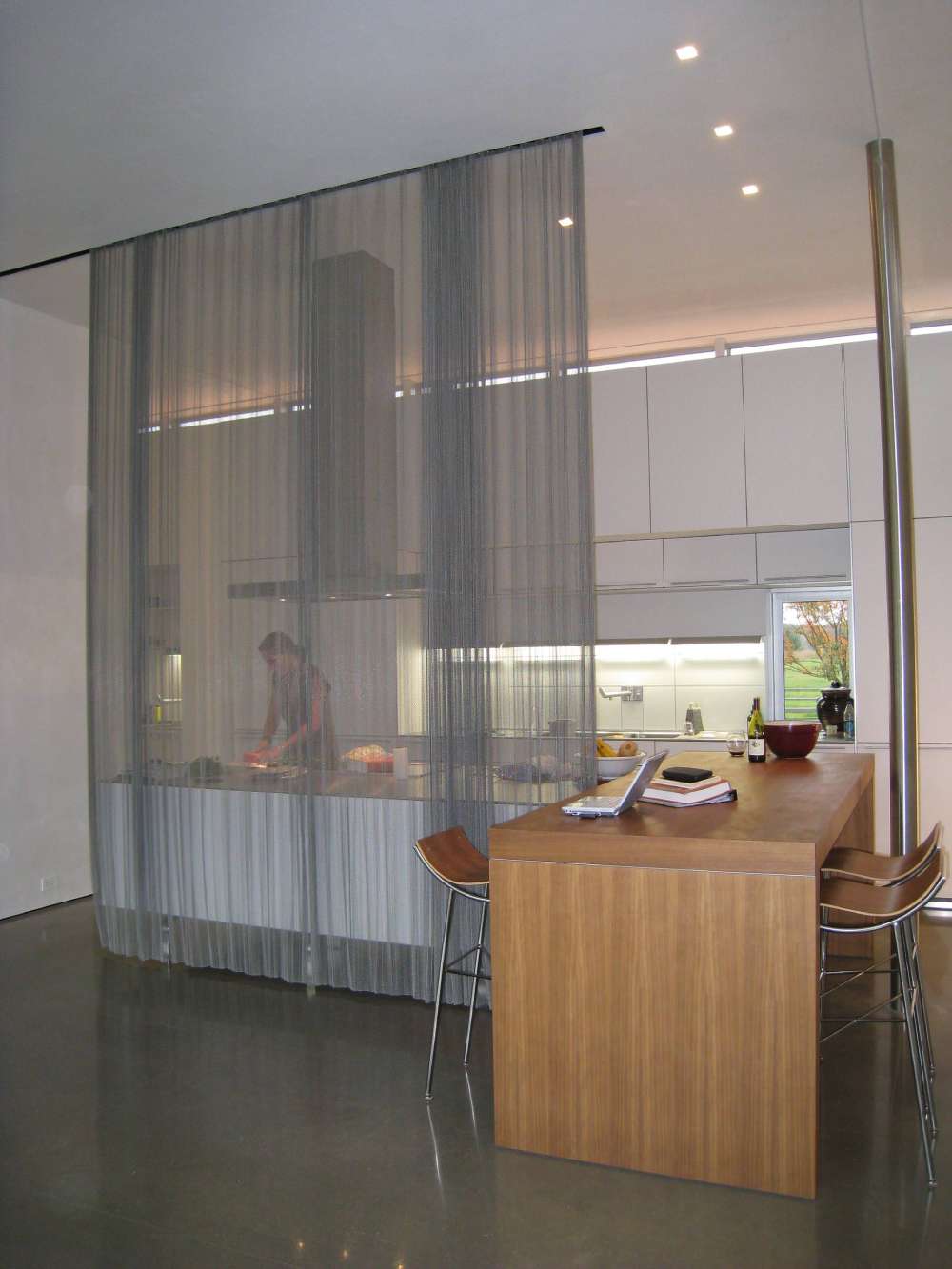 Image source: Bushman Dreyfus Architects
Image source: Bushman Dreyfus Architects
These short curtains are adorbs and functional. Hang them at doorways or in windows to add a splash of color and pattern. They’re a great way to express your personality and style without going overboard. And hey, they’re easy to swap out if you want to change things up.
Calligraphy Art
Why not add some Japanese calligraphy to your walls? It’s a beautiful way to incorporate Japanese culture and create a focal point in your space. Choose a meaningful phrase or character, and let the elegant brushstrokes speak for themselves.
Koi Ponds
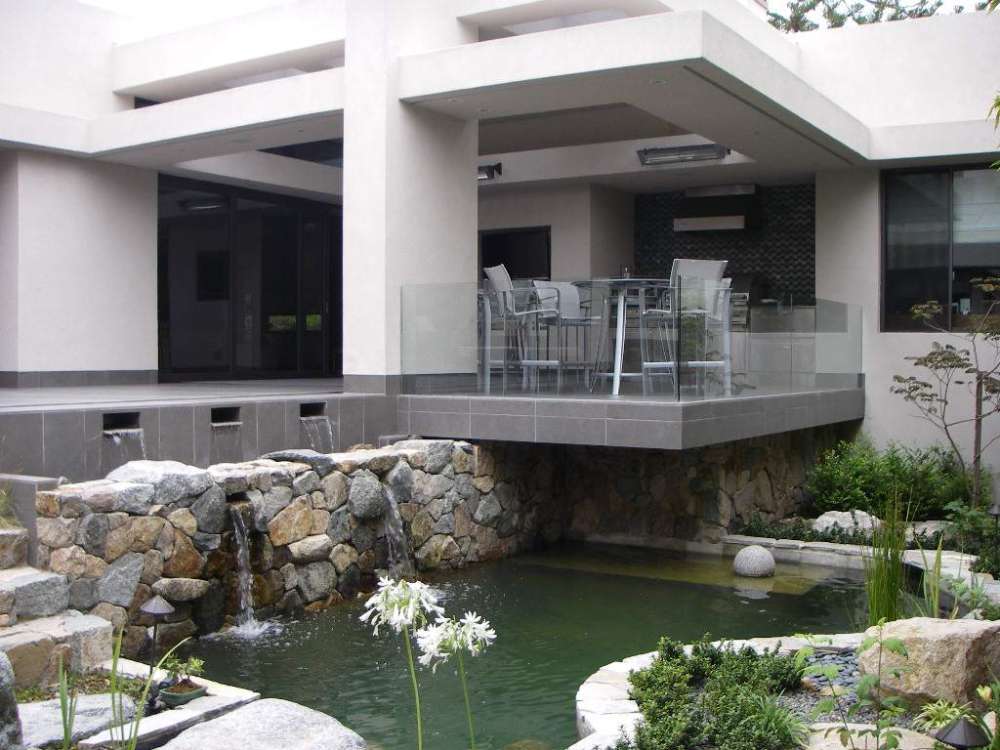 Image source: Modern Zen Garden
Image source: Modern Zen Garden
If you’ve got some outdoor space, a koi pond is a fantastic addition. These fish are not only gorgeous but symbolize good fortune and perseverance. Add some water lilies and a small waterfall for a truly stunning effect.
Futons and Low Furniture
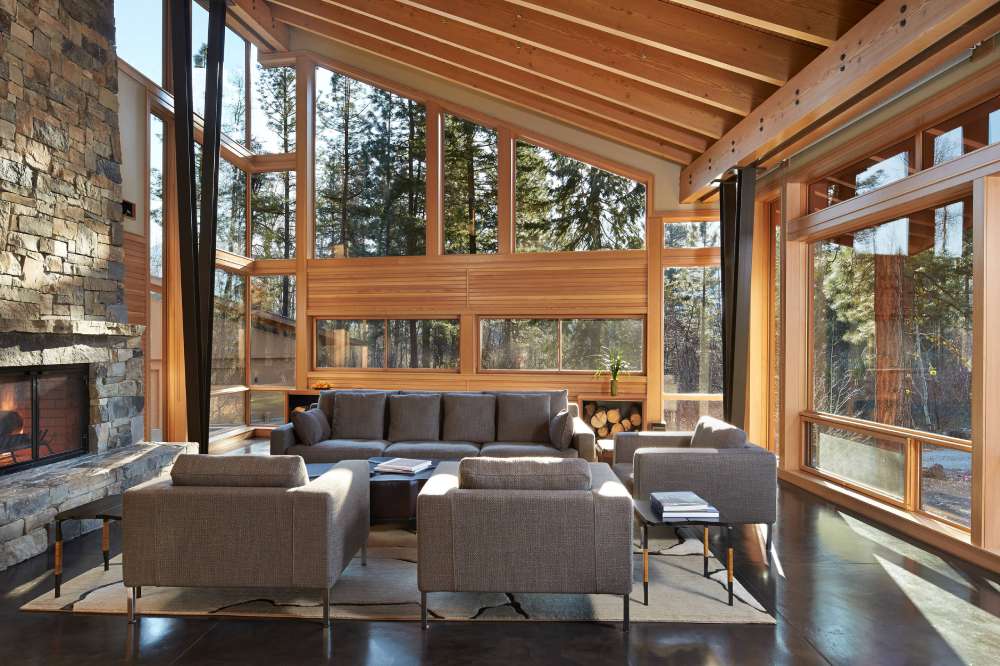 Image source: FINNE Architects
Image source: FINNE Architects
Ditch the traditional bed and go for a Japanese-style futon. They’re cozy and save space since you can fold them up during the day. Pair it with low furniture like coffee tables and floor cushions for that authentic Japanese vibe.
Kotatsu Tables
 Image source: Pamela Pennington Studios
Image source: Pamela Pennington Studios
Imagine this: it’s winter, and you’re snuggled up under a cozy blanket, enjoying a hot drink. That’s the magic of a kotatsu table! It’s a low table with a built-in heater and a blanket, perfect for those chilly nights. Trust me, you won’t want to leave.
Washi Paper Lamps
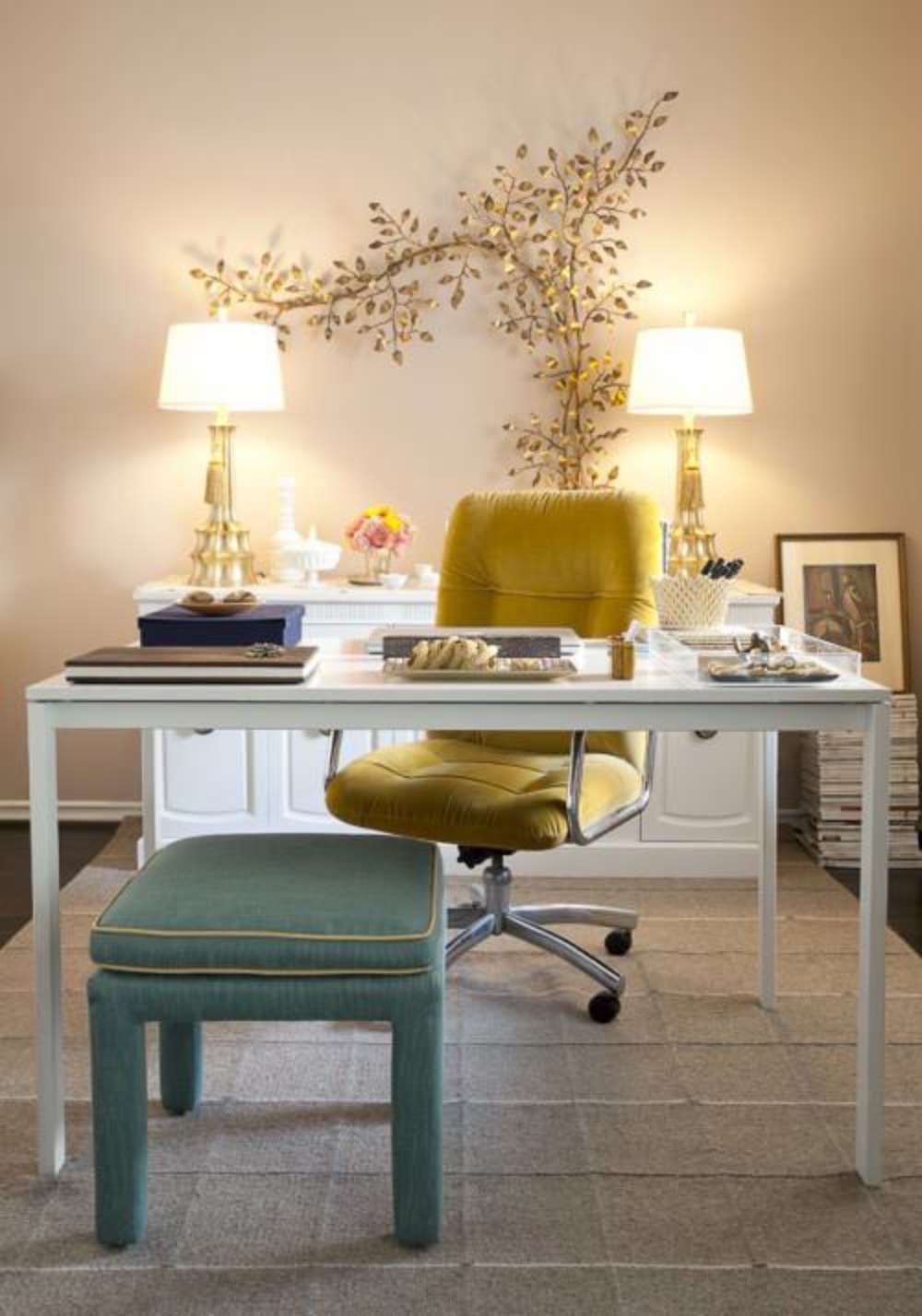 Image source: For People design
Image source: For People design
Illuminate your space with washi paper lamps. These lamps have a soft, warm glow that creates a cozy atmosphere. Choose from traditional or modern designs, and let there be light!
Japanese Tea Ceremony Set
 Image source: RA Nelson LLC
Image source: RA Nelson LLC
Channel your inner tea master with a Japanese tea ceremony set. It’s not only a great way to relax and unwind but also an opportunity to share a unique experience with friends and family. Get a teapot, cups, a bamboo whisk, and a matcha bowl to start your tea journey. Time to get steeping!
Bonsai Trees
Add a touch of nature with a bonsai tree. These mini trees are a true art form and require care and attention, but it’s so worth it! Choose a variety that suits your space and style, and watch it grow into a living masterpiece.
Origami Decorations
How about some origami decorations? It’s a fun, creative way to add a personal touch to your space. Fold cranes, flowers, or whatever your heart desires. Hang them from the ceiling or display them on shelves. The possibilities are endless!
Wabi-Sabi Elements
 Image source: KuDa Photography
Image source: KuDa Photography
Embrace the beauty of imperfection with wabi-sabi elements. This Japanese concept is all about appreciating the natural aging process and finding charm in imperfections. Think handmade pottery, irregular-shaped items, and worn textiles. It’s a reminder that nothing is perfect, and that’s okay.
Sake Set Display
Show off your love for Japanese culture with a sake set display. Grab a beautiful sake bottle and matching cups, and put them on a tray or shelf. It’s a lovely conversation starter and adds an authentic touch to your home.
Kintsugi Art
You know what’s really cool? Kintsugi. It’s the art of repairing broken ceramics with gold, silver, or platinum. The idea is to embrace the flaws and make them beautiful. Try your hand at kintsugi or buy a finished piece to bring a touch of Japanese wisdom to your space.
Japanese Paintings
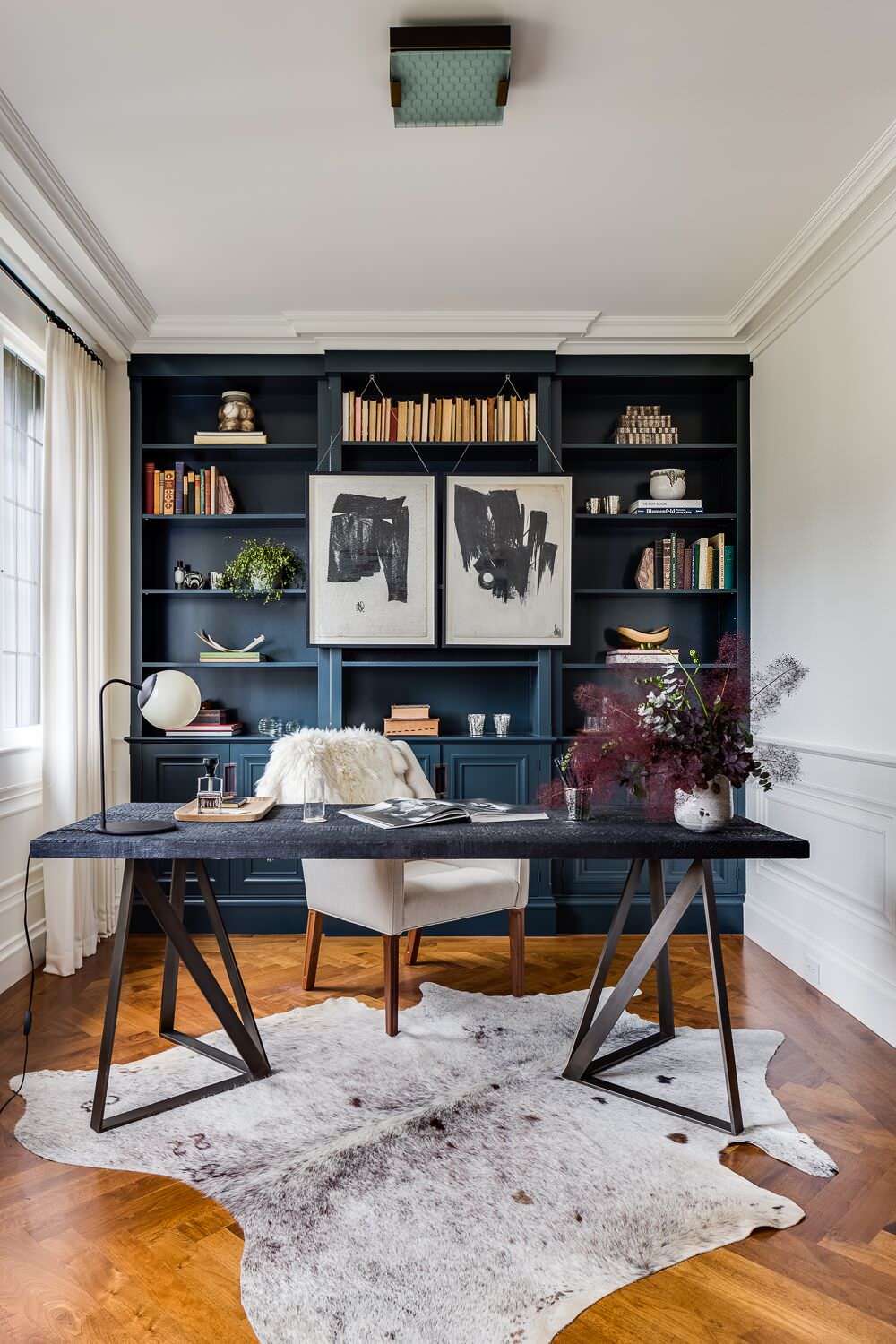 Image source: Town Line Wallpaper & Paint Inc.
Image source: Town Line Wallpaper & Paint Inc.
Add some classic Japanese art to your walls. Choose from ukiyo-e prints, sumi-e ink paintings, or contemporary works. They’ll transport you to another world and add a splash of color and culture to your home.
Stone Lanterns
Last but not least, stone lanterns! They’re perfect for your garden or patio. These traditional lanterns are both decorative and functional, casting a soft, ambient light. Go for a classic design or something more modern – the choice is yours.
FAQ On Japanese Home Decor
How do I capture authentic Japanese home decor style?
Think minimalism, natural elements, and functionality. It’s all about decluttering and embracing pieces that serve a purpose or spark joy. Incorporate tatami mats and bamboo accents. Remember, true Japanese decor is rooted in a connection with nature, so harmony is key.
What essential furniture pieces define Japanese interior design?
The heart of Japanese furniture design lies in simplicity and the use of natural materials. Essential items include low-profile kotatsu tables, futons for sleeping, and chabudai dining tables. Each piece combines practicality with a sense of calm and floor-centric living.
Can I blend modern aesthetics with Japanese home decor?
Absolutely. The fusion known as Japandi marries the minimalist approaches of both Japanese and Scandinavian styles.
To achieve this, integrate modern clean lines with traditional Japanese elements like shoji screens or fusuma. The result is a streamlined, contemporary space that breathes Zen.
How important are plants in Japanese home decor?
Plants are the soul of Japanese interiors, symbolizing life and renewal. Bonsai trees and sakura (cherry blossoms) make for subtle, living decor. An indoor Zen garden, perhaps with maple or ginkgo, can also introduce a tranquil, green touch to your living space.
What are some traditional Japanese decorative items I can use?
Infuse cultural depth with traditional items like ornate fans, intricate calligraphy, or delicate lanterns.
Daruma dolls or Maneki-neko figures not only decorate but also carry meanings of perseverance and good fortune, respectively. Using these can add a layer of authenticity to your decor.
How do I choose the right colors for my Japanese-inspired space?
Focus on nature-inspired palettes. Soft earth tones, neutral whites, and greens, complemented by the occasional deep red or black, create a balanced aesthetic. These hues reflect the minimalist and natural philosophy central to Japanese culture.
What’s the ideal lighting for a Japanese-themed room?
Soft, diffused lighting is crucial. Paper lanterns or washi-covered lamps cast a gentle, ambient glow, echoing the calm of a traditional ryokan (inn). The goal is to mimic the gentle light that filters through shoji screens in a typical Japanese home.
Is there a specific layout I should follow for Japanese home decor?
Embrace Ma, the concept of negative space, allowing each element room to breathe. Room layouts in Japanese home decor tend to be open and flexible, often sectioned by fusuma or noren curtains for privacy, rather than permanent walls.
What kind of textiles are used in Japanese decor?
Textiles often feature natural fibers like silk, cotton, or linen. Traditional patterns like kimonos or tenugui (hand towels) are used as decorative elements. Fabrics tend to carry subtle designs and are used sparingly to maintain the minimalist vibe.
How do I incorporate Wabi-sabi into my home decoration?
Embrace imperfection and the natural aging process of materials. Display handcrafted pottery with visible cracks filled with gold—a practice known as kintsugi.
Letting wooden furniture show its grain and using irregularly shaped objects are ways to celebrate Wabi-sabi in your home.
Conclusion
Wrapping up this journey into Japanese home decor, it’s like we’ve wandered through a serene bamboo forest and emerged clearer on what makes this style deep-rooted yet ever-evolving. Whether it’s the subtlety of a kintsugi-repaired vase or the statement of a striking shoji screen, the takeaway is balance—a delicate dance between natural beauty and intentional design.
- Dive into minimalism but don’t skimp on soul.
- Embrace natural materials—they’re friends, not just features.
- Let spaces breathe; Ma is not emptiness, it’s potential.
To create a space that resonates with the spirit of Japanese design is to invite a kind of stillness that speaks volumes. Remember, it’s not just about importing a look. It’s about courting a feel; a vibe that whispers—a home that’s as alive as a Zen garden, yet as calm as a tea ceremony.
Carry these inspirations, and craft spaces that aren’t just places but experiences—a personal sanctuary echoing Japanese aesthetics.
If you liked this article about Japanese home decor, you should check out this article about eclectic home decor.
There are also similar articles discussing Scandinavian home decor, industrial home decor, French country home decor, and modern home decor.
And let’s not forget about articles on farmhouse home decor, traditional home decor, coastal home decor, and vintage home decor.

